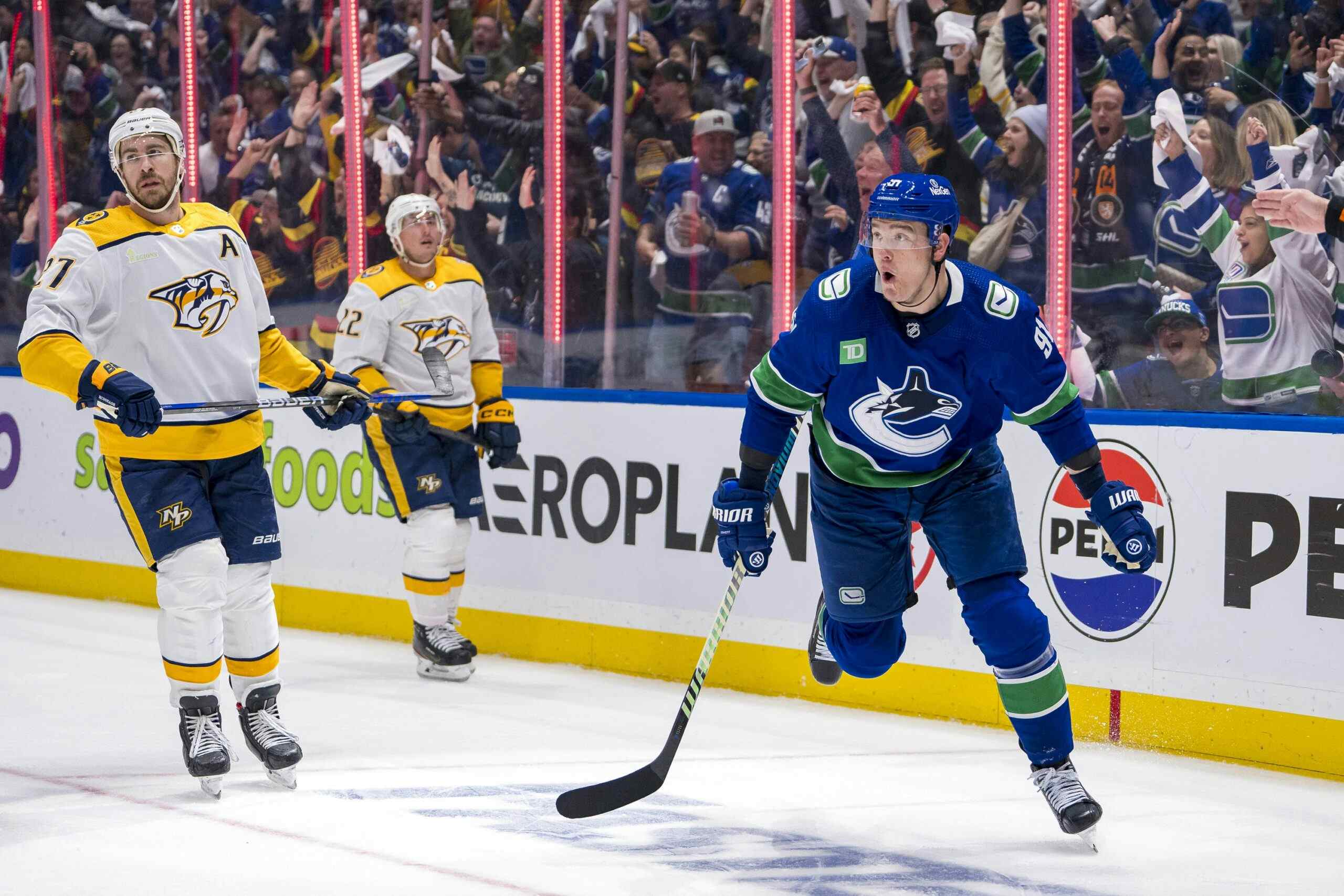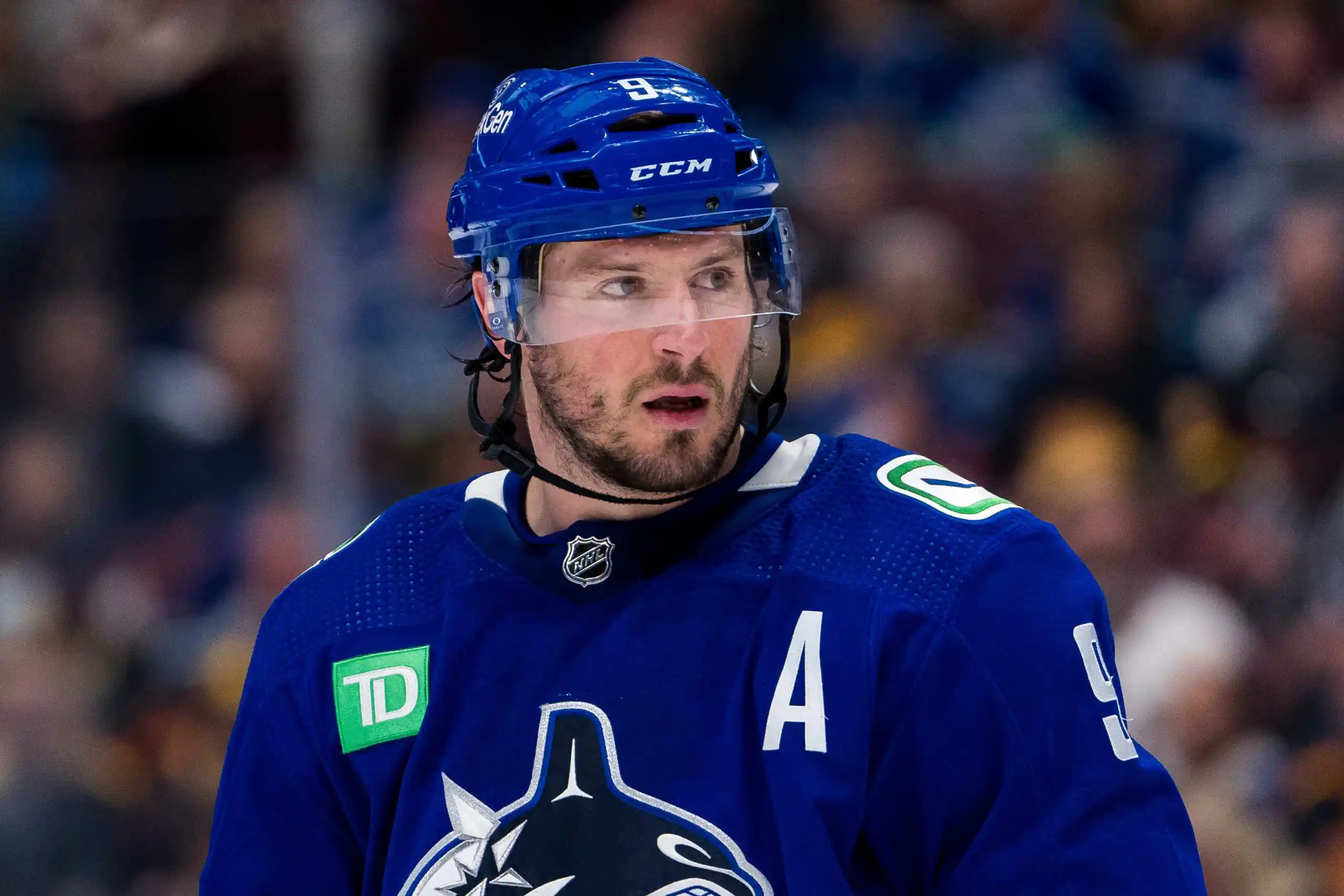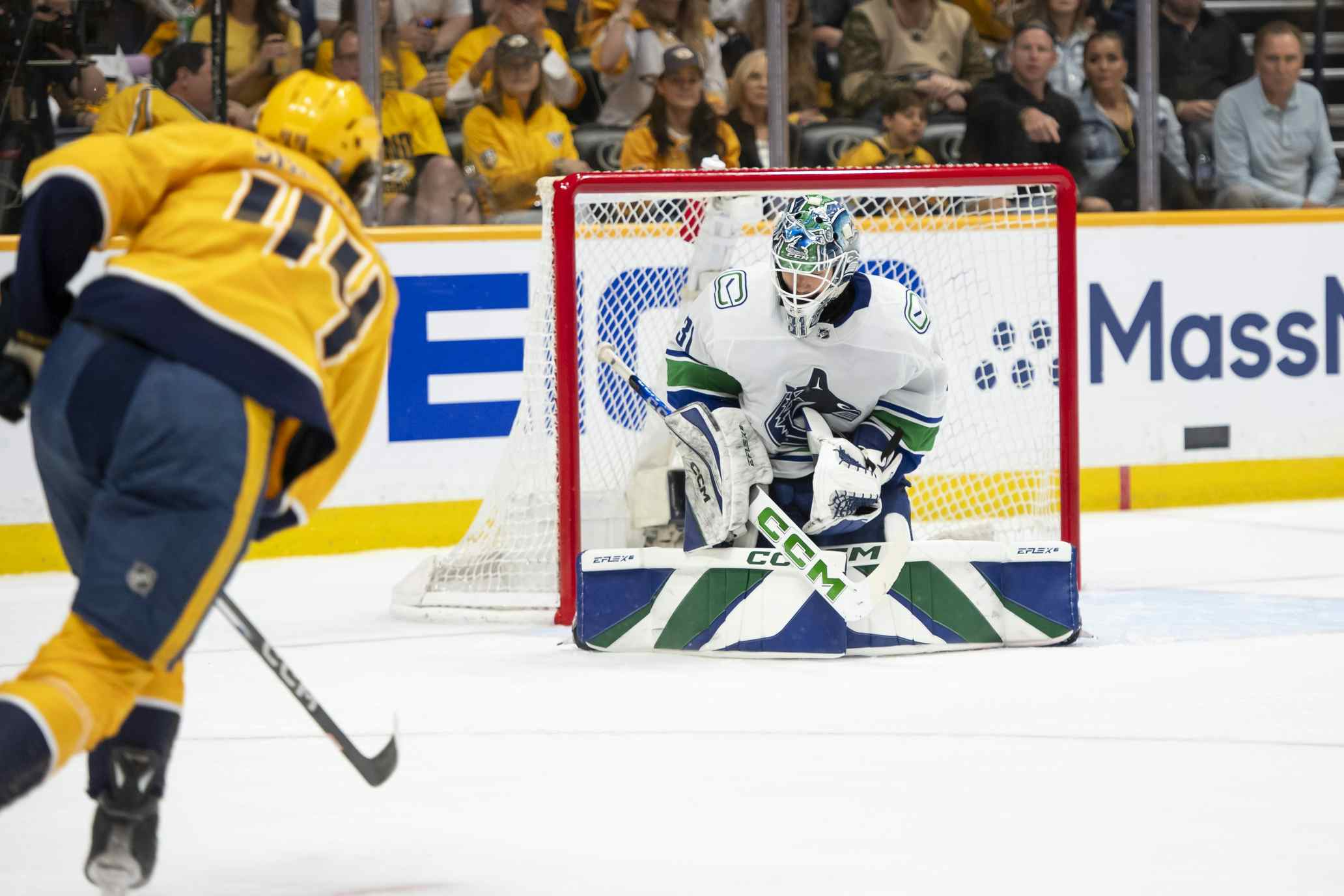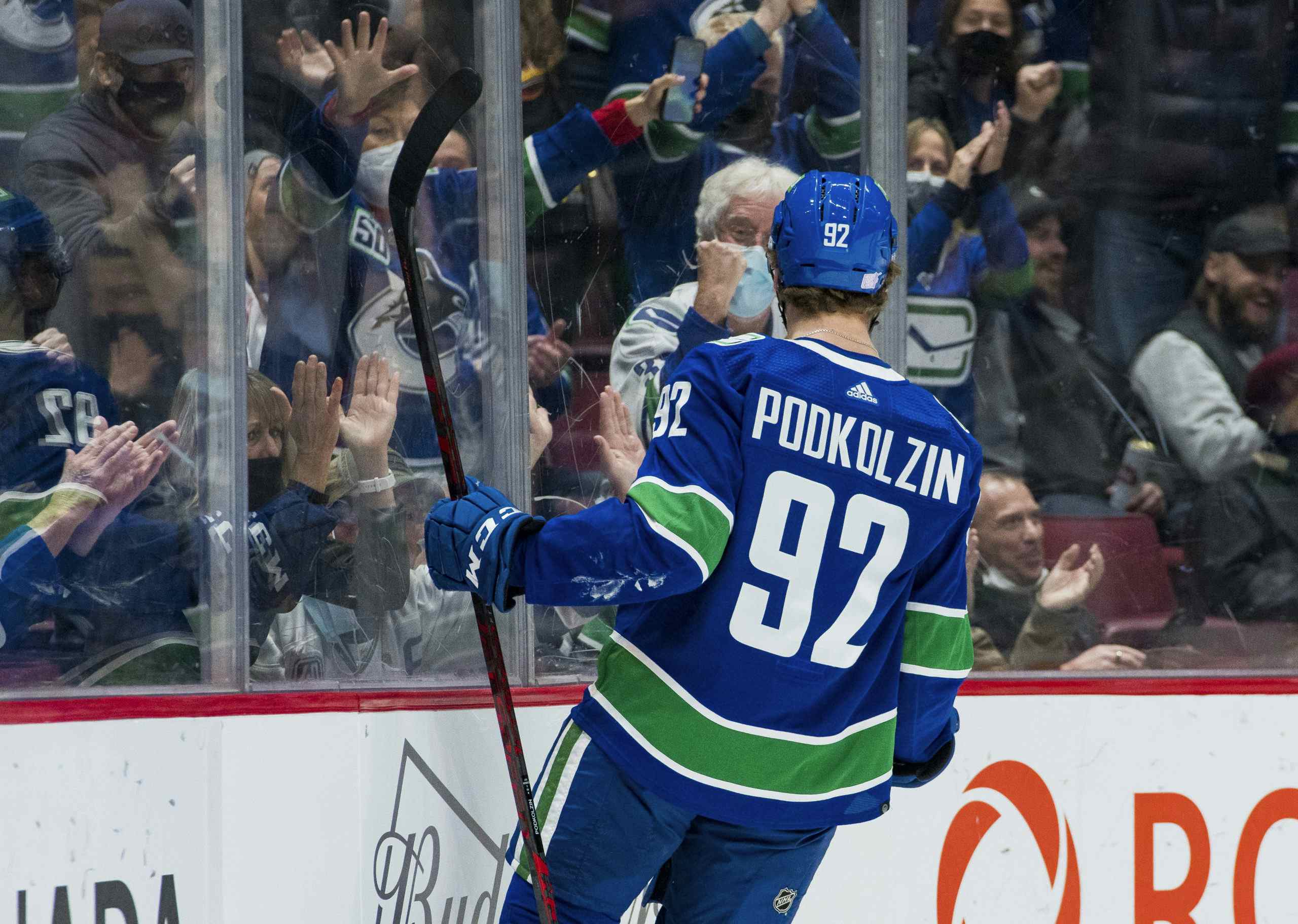Do the Canucks Have A Second Line?
7 years ago
The Canucks’ lack of secondary offence was a hot topic last season, and with good reason. In spite of a vintage offensive performance from Daniel Sedin and Jannik Hansen’s emergence as a 20-goal scorer, the club finished with the league’s second-worst offence in 2015-16.
Secondary scoring’s been elusive for a few seasons now, though. Fans are at a point where they have a difficult time remembering the club’s last authentic second line. A reality they confront more often than not with the tongue in cheek description of the Canucks, as a team with “three third lines“.
Acquiring Loui Eriksson is bound to alleviate concerns about goal-scoring, but he’s also likely to play alongside Daniel and Henrik Sedin. Such a development leaves the future of the Canucks middle-six shrouded in mystery. Satiar Shah explored the possibility of moving Eriksson down the lineup in favour of Jannik Hansen, but that addresses just one of the many questions facing that section of the lineup.
A trade or signing may still be to come, but as of right now the question remains: can the Canucks expect to have a true second line next season?
WHAT IS SECOND-LINE PRODUCTION?
The definition of a second line is fairly nebulous. For many teams, the bottom-nine is fairly interchangeable, with pieces being mixed and matched at different points throughout the season. Some teams spread their most potent offensive contributors over their top two (or, if you’re the Pittsburgh Penguins, three) lines. Other teams load up their second line with two-way players that can play primarily in a shutdown role. As a general rule, there are two ways to number your lines: by ice-time, and by offensive output.
In Vancouver’s case, defining the team’s second line by ice-time would be an exercise in futility. Canucks head coach Willie Desjardins has been known to use questionable deployment strategies and the line that gets the second-most ice time is likely to change from night to night. With that in mind, we’ll define the Canucks potential second-line players by their offensive production.
By definition, if there are 30 teams in the league, there should be 30 first line centres, left wingers, and right wingers in the league. So, for the sake of simplicity, we’ll define first-line players as the players at each position that fall in the 1-30 range, second players will fall in the 31-60 range, and so on. Some teams have more than one player that falls within each range, but the purpose of this exercise isn’t to have a philosophical discussion of what makes a second-line player. The purpose is simply to devise a set of reasonable performance tiers for a player based on their line. Andrew Berkshire wrote a similar article last year that served as the inspiration for applying this line of thinking to the Canucks’ roster.
| Line | Position | All-Situations Point Range | ES Point Range | Canucks Players That Fell Within This Range in 2015-16 |
| 1st | Centre | 85-55 | 30-51 | Henrik Sedin |
| 1st | LW | 43-89 | 28-48 | Daniel Sedin |
| 1st | RW | 41-106 | 29-57 | Loui Eriksson, Jannik Hansen (ES) |
| 2nd | Centre | 42-54 | 24-30 | Bo Horvat (ES) |
| 2nd | LW | 24-42 | 20-28 | Sven Baertschi |
| 2nd | RW | 25-40 | 20-29 | Jannik Hansen (AS) |
| 3rd | Centre | 30-42 | 14-24 | Bo Horvat (AS) |
| 3rd | LW | 11-24 | 11-20 | Alex Burrows |
| 3rd | RW | 11-24 | 11-20 | Jake Virtanen, Derek Dorsett, Emerson Etem |
After establishing these performance tiers, there are a few things that stand out:
- The offensive expectations placed on second-line forwards are often unrealistic. We’re many years removed from the days of 60 or 70 point second line players. If you have a winger on your second line that can produce around 40 points, you have a very good second line winger.
- At even strength, the Canucks have may have two legitimate options at first-line RW, and Jannik Hansen’s performance last season has likely earned him a look on the powerplay.
- Sven Baerstchi’s 28-point campaign placed him at the bottom-end of the 31-60 range used to define second-line left wingers, in spite of missing 13 games.
- Outside of Henrik Sedin, the Canucks do not have a centre that has produced at a second-line rate at any point in their career.
LOOKING TO THE FUTURE
At right wing, the Canucks are basically set. Eriksson and Hansen are both viable options in the top six, and Emerson Etem, Jake Virtanen, Alex Burrows, etc., are all capable of holding down jobs at the bottom of the lineup. Unfortunately, they don’t have quite the same amount of depth at the other two forward positions.
In all likelihood, if the Canucks are going to get second line production out of one of their centres, it will be Bo Horvat. Brandon Sutter has failed to ever produce points at the level that would be expected from a second line centre and is years removed from the career-high of 40 points he achieved in his sophomore season. Horvat struggled mightily at the commencement of the 2015-16 season, but he scored at a torrid pace towards the end of the year, and it seems entirely reasonable that he could find himself in the 45-50 point range should the percentages normalize.
The left side is where things get really interesting. We can assume based on his performance last season that Sven Baertschi should be able to produce offence at a high-end rate for a third line winger. The real question is whether or not he takes a step forward. The Canucks also have 2015-16 SHL MVP Anton Rodin waiting in the wings, and he also happens to be a left-handed shot who appears to play a similar game to Baertschi, at least on a superficial level. Rodin has yet to play an NHL game, however, and we won’t really know what he’s capable of until we see him play.
With this in mind, the Rodin-Sutter-Hansen line that some have pencilled in at the #2 slot on the depth chart doesn’t seem like a great bet to produce offense. When Jannik Hansen is the most proven offensive commodity on your second line, you’re going to have a problem scoring goals.
CONCLUSION
If the Canucks want to return to the realm of respectability in terms of secondary offence next season, they will need to rely on their young players. Expecting 27-year old Sutter to suddenly find a new gear offensively isn’t a good idea, especially given his well-established defensive acumen. Rodin remains a complete wild card.
The good news is, the Canucks will have one thing they didn’t have much of last season: options. So much so that they could probably justify staying put with their roster. The mix of established veterans and improving young players that are eager to prove they belong will make for an interesting dynamic in the Canucks’ middle-six this fall. Whether any of those players can become fixtures in the top six remains to be seen.





